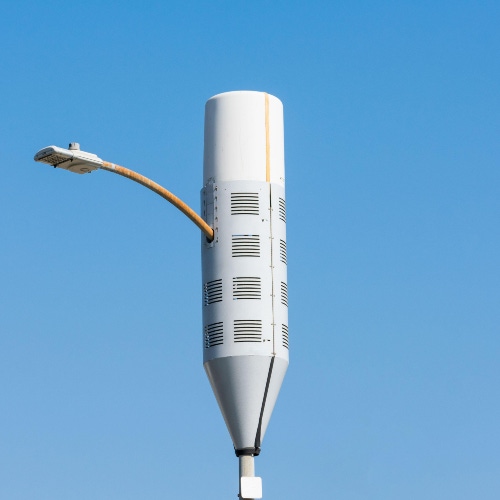Small cell focus still largely on densification
While densification seems to be the main focus for small cell deployments, use cases such as indoor 5G coverage and private networks are emerging.

Some big ambitions for small cells were on display during the annual Small Cell World Summit in London this week. But it's worth remembering that on the ground, their deployment is still at a relatively early stage.
Dean Bubley of Disruptive Analysis, who chaired a panel addressing the issues of value creation and monetization, summarized the situation by saying: "Clearly we are on a journey, but it might be quite a long one."
He later noted that, for now, the focus seems to be on increasing network capacity through densification, with the next step being "capacity enhancement from 4G to 5G increment," starting indoors.
Bubley reiterated that for many small cells, the next generation is 5G, not 5G Advanced or 6G. To commit to any upgrades, he pointed out, there ideally needs to be a business case to justify the investment.
Figure 1:  Dean Bubley, Nick Wiggin, Abel Mayal and Ali Akhtar speaking at the Small Cell World Summit.
Dean Bubley, Nick Wiggin, Abel Mayal and Ali Akhtar speaking at the Small Cell World Summit.
(Source: Tereza Krásová/Light Reading)
Gabriel Brown, a senior principal analyst for mobile networks at Heavy Reading (Light Reading's sister company) said in emailed remarks to Light Reading that: "Indoor 5G adds make a big difference to how attractive a venue is to its users and therefore is of direct interest to landlords. The logic leads, inexorably, to the conclusion that building owners and venue operators should contribute funding to indoor 5G systems."
He went on to say that real estate developers are now very aware of this requirement, while owners of existing buildings sometimes take more persuading. "An indoor coverage system can make a big contribution to achieving a higher 'WiredScore,' which building owners increasingly use to market their venues," he said.
WiredScore assesses and certifies connectivity inside buildings within a standardized framework. It helps translate the digital infrastructure available into simpler language and explain its capabilities to audiences such as renters.
In search of a business case
In some areas, the business case may be less straightforward. Ali Akhtar, BT Wholesale's head of acquisition and contracts, pointed to the example of a Liverpool hospital that wanted to deploy a private network for the purposes of transferring records. He said that there was a need to find a business case based on a commercial use as well, such as improving connectivity for patients.
There was agreement among the panelists that government initiatives supporting small cells ensure that the projects can eventually stand on their own two feet. Nick Wiggin, head of partnerships at Freshwave, a UK-based infrastructure-as-a-service company, pointed to the £80 million (US$99 million) Open Network Ecosystem Competition from the Department for Science, Innovation and Technology (DSIT) as a good example of this.
According to Abel Mayal, the senior vice president of technology and marketing at Airspan – a network densification provider and a vendor of 4G and 5G software – there are currently two main markets for small cells. The first is network densification for or by mobile network operators (MNOs), which still mainly consists of 4G deployments, while the other is private networks based on open radio access network (RAN) technology, which tend to use 5G.
This was echoed by Akhtar. For the past five years, the focus has been on using 4G small cells to densify the network, with work on this still ongoing, he said. Deployments usually take place in busy areas such as high streets. But with the surge in home working, they have also targeted pressure points in residential areas.
So far, most activity has been in dense urban areas, according to Akhtar, with about 36 cities targeted by BT. Around three to four small cells are needed to decongest a macro site, said the BT executive.
For network densification projects, cooperation with local authorities is key as equipment often needs to be mounted on infrastructure such as CCTV poles or street lights.
With regard to building small cells on behalf of telco partners in urban settings, Wiggin cited the example of a project in Birmingham on which Freshwave worked with Birmingham Council and West Midlands 5G. The use of a DSIT template for an open access agreement slashed delivery time for small cells in the city center by six months.
CBRS as the way forward
Local authorities can play different roles in small cell projects, as either customers or partners. Wiggin pointed out that small cell deployment does not generate revenue for local authorities, saying Freshwave's position is to create benefits for them, help get key stakeholders on board and try to "demystify private financing initiatives."
Given that reducing clutter is a key requirement for local authorities, Wiggin argued that neutral host deployments are the optimal solution, meaning those where the underlying infrastructure is shared. In such cases, it is important to have a single frequency that everyone uses to prevent the need for bulky radios with several antennas, said Wiggin.
Regional differences come into play here, affecting the ease of deploying neutral host small cells. In the US, the Citizens Broadband Radio Service (CBRS) has proven to be successful, as witnessed by the large number of deployments.
Bubley noted that these essentially constitute private networks with their own spectrum and core as well as multiple telco tenants. In the UK, meanwhile, something called the multi-operator RAN (MORAN) model is prevalent. Mayal said the MORAN model imposes a limitation because the radio needs to accommodate all possible telco combinations.
During the Small Cell World Summit, several speakers spoke of the large potential for small cells in private networks. Freshwave's executive chairman Graham Payne noted that, while capital intensive, private networks are ideal for areas such as construction, where high reliability is of the essence.
Qualcomm's senior director for technology, George Tsirtis, meanwhile spoke of the company's plans to create highly detailed blueprints that would allow it to offer turnkey solutions to different verticals.
Expect to hear more about private networks in the coming months and years as it seems to be an area to watch.
Related posts:
— Tereza Krásová, Associate Editor, Light Reading
Read more about:
EuropeAbout the Author(s)
You May Also Like












